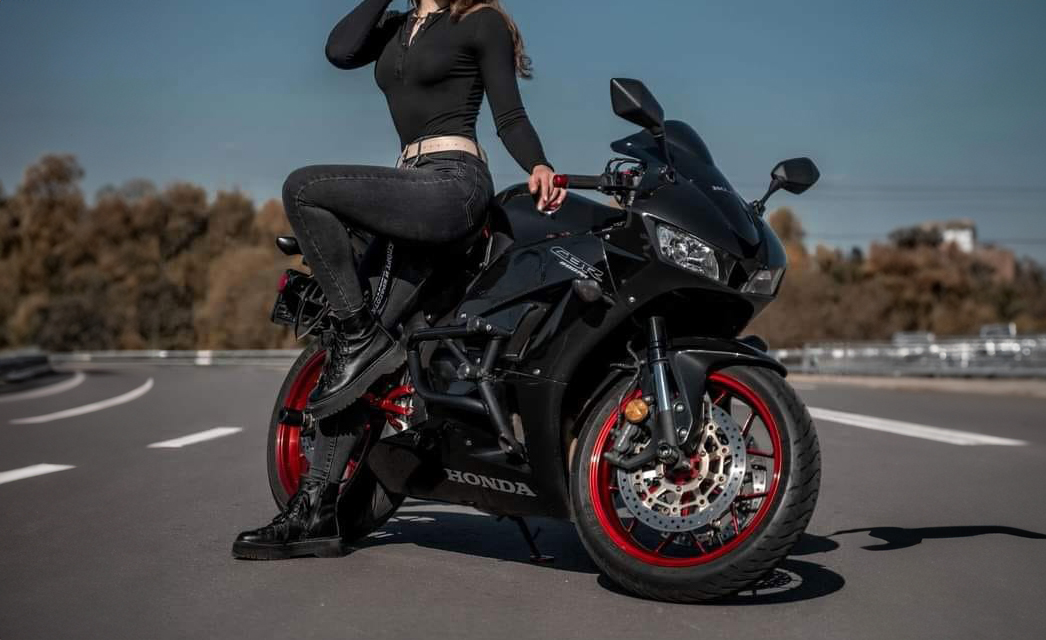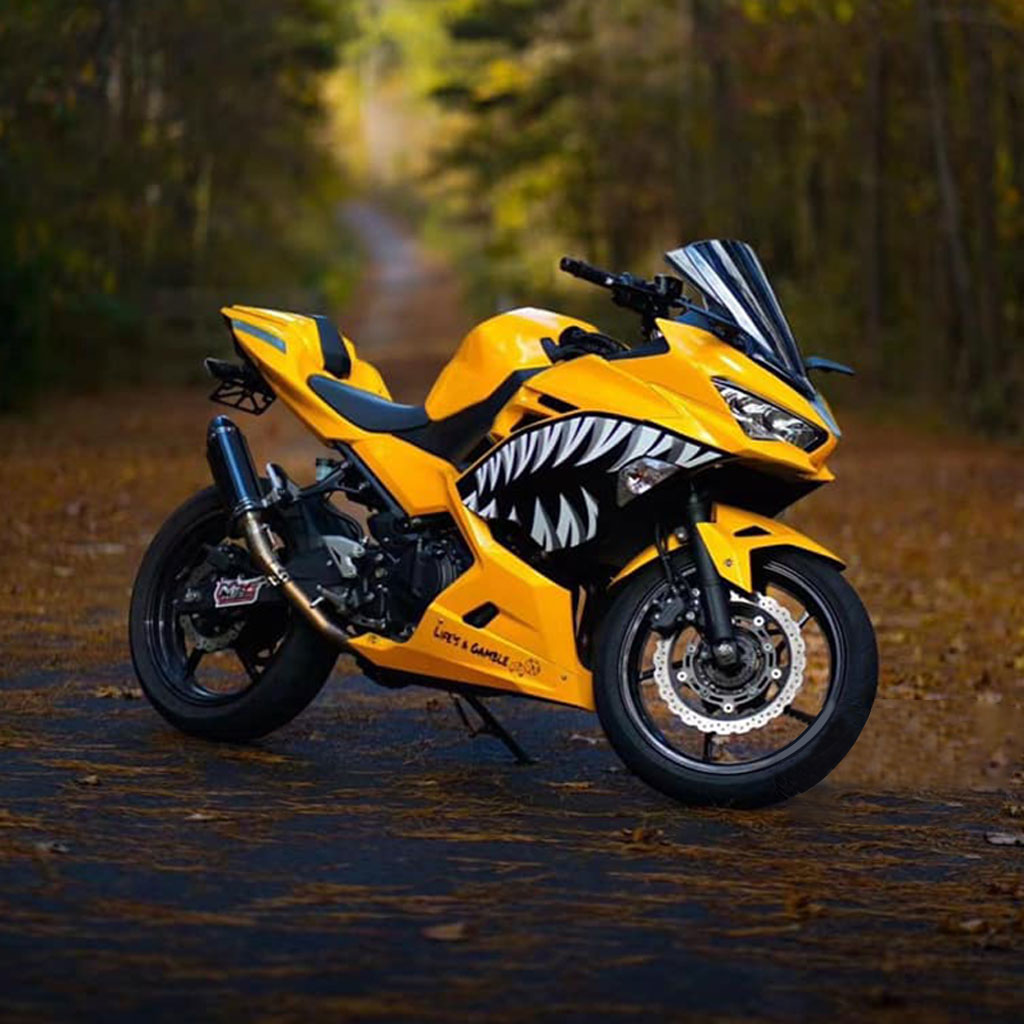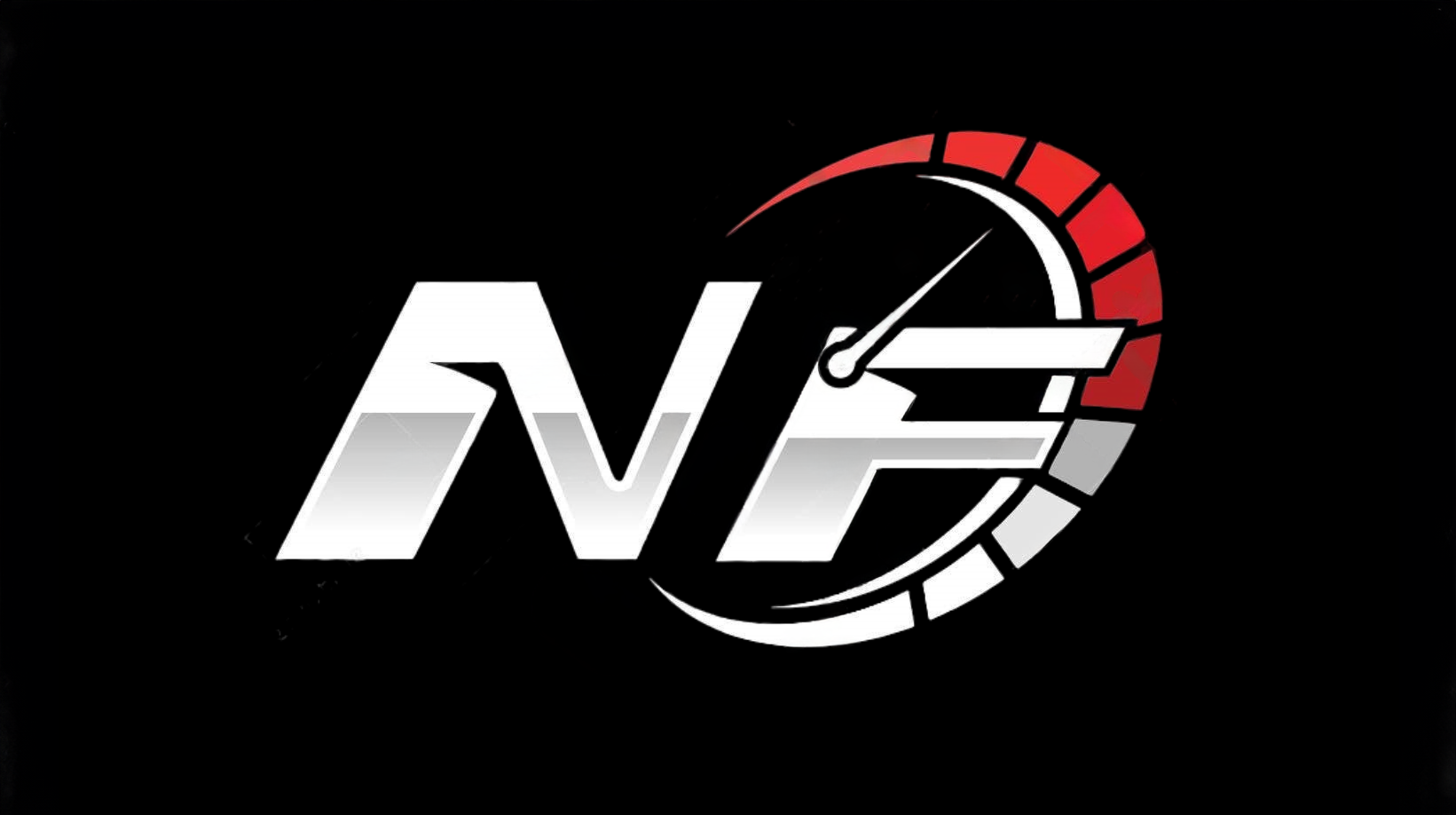Top Road Safety Tips for Riders with Motorcycle Fairings

Riding a motorcycle is thrilling, but staying safe should always come first. A motorcycle fairing isn’t just about style—it’s a vital safety feature. It shields you from wind, debris, and rain, keeping you focused. Pair that with protective gear and following traffic laws, and you’re already ahead in protecting yourself on the road.
Key Takeaways
Motorcycle fairings shield you from wind, rain, and dirt. They make riding safer and more comfortable.
Check your fairings often to find small problems early. Fix them before they get worse.
Wear bright colors and reflective gear to be seen easily. This helps you stay safe when it’s dark or dim outside.
Understanding Motorcycle Fairings
What Are Motorcycle Fairings?
A motorcycle fairing is a protective shell that attaches to your bike's frame. It’s not just for looks—it plays a big role in improving your riding experience. Fairings are typically made from materials like fiberglass, which is lightweight, strong, and durable. Fiberglass is also easy to repair if damaged, though it can crack under extreme stress. These fairings shield you and your bike from wind, rain, and debris, making your ride smoother and safer. Think of them as your bike’s armor, designed to protect both you and the machine.
Benefits of Motorcycle Fairings for Safety
Motorcycle fairings offer several key safety benefits that every rider should know about:
They protect your bike’s components from weather, stones, and gravel, keeping everything in top shape.
Fairings act as a barrier against flying debris, reducing distractions while you ride.
They streamline airflow, cutting down on wind resistance and drag. This makes your bike more stable, especially at high speeds.
During low-impact accidents, fairings can absorb some of the impact, minimizing damage to your gear and reducing injury risks.
They shield you from strong winds, which helps prevent fatigue on long rides.
By combining these benefits, fairings enhance your overall safety and comfort on the road.
Types of Motorcycle Fairings and Their Uses
Not all motorcycle fairings are the same. Different types serve specific purposes, so choosing the right one depends on your riding needs:
Full Fairings: These cover most of the bike, offering maximum wind and weather protection. They’re great for long-distance riders.
Half Fairings: These cover the upper part of the bike, balancing protection and a sporty look.
Belly Pans: These small fairings sit under the engine, improving aerodynamics and shielding the engine from debris.
Touring Fairings: Designed for comfort, these fairings provide excellent wind and weather protection for long trips.
Each type enhances your riding experience in unique ways, whether it’s by improving aerodynamics, shielding you from the elements, or adding an extra layer of impact protection.
Visibility and Motorcycle Fairings
How Fairing Design Affects Visibility
The design of your motorcycle fairings can play a big role in how visible you are to other drivers. Fairings with sleek, aerodynamic shapes might look great, but they can sometimes make your bike harder to spot, especially in low-light conditions. Larger fairings, like full or touring fairings, provide more surface area for reflective materials or bright colors, which can help you stand out. When choosing fairings, think about how their size and shape can improve your visibility on the road. A well-designed fairing not only enhances your bike’s performance but also boosts your safety by making you more noticeable.
Using Bright Colors and Reflective Elements
Bright colors and reflective elements are your best friends when it comes to staying visible. Neon yellow, bright orange, and white are excellent choices because they’re easier for other drivers to see, even from a distance. Adding reflective tape or decals to your fairings and wheels can make a huge difference, especially at night. These materials reflect light from headlights, making your bike pop in low-light conditions. Don’t forget about your gear—reflective jackets, helmets, and vests can complement your fairings and keep you visible from all angles.
Tips for Staying Visible to Other Drivers
Staying visible isn’t just about your bike—it’s about how you ride too. Here are some tips to help you stand out:
Use reflective tape on both your gear and motorcycle.
Install headlight modulators to make your front light pulse during the day.
Wear high-visibility clothing like neon jackets or helmets.
Upgrade to LED lights for brighter illumination.
Position yourself in lanes to avoid blind spots.
Signal your intentions early and clearly.
Keep your headlights on during the day.
By combining these strategies with the right fairings and gear, you’ll significantly improve your visibility and overall safety on the road.
Maintenance and Motorcycle Fairings
Importance of Regular Inspections
Regular inspections are essential to keep your motorcycle fairings in top condition. They help you catch small issues before they turn into bigger problems. For example, loose bolts or worn-out parts can compromise the stability of your fairings. By checking your bike regularly, you ensure that everything stays secure and functional. Don’t forget to inspect other critical areas like tire pressure, brake systems, and fluid levels. These checks not only protect your fairings but also improve your overall safety on the road. Make inspections a habit—it’s a simple step that can save you from costly repairs or dangerous situations.
Common Maintenance Issues to Address
Neglecting maintenance can lead to problems that affect both your bike and its fairings. Here are some common issues to watch out for:
Loose bolts that can cause fairings to rattle or detach.
Low tire pressure, which affects stability and increases wear on your bike.
Faulty brake systems that reduce control and put stress on your fairings.
Dried-out or unlubricated moving parts that can lead to mechanical failures.
Addressing these issues early keeps your bike running smoothly and ensures your fairings stay secure. Tighten bolts, lubricate moving parts, and perform routine checks to avoid unnecessary risks.
Cleaning and Caring for Your Fairings
Keeping your fairings clean isn’t just about looks—it’s about safety too. Start by cleaning sensitive parts like the chain and engine to avoid spreading dirt to the bodywork. Use a wire brush and chain cleaner for the chain, then apply chain spray for lubrication. For the engine, a sponge and warm water with car shampoo work well. When cleaning the fairings, use a gel cleaner that clings to vertical surfaces. Don’t forget to clean your headlights, mirrors, and windshields with an insect remover. Clear visibility is crucial for safe rides, so make this part of your routine.
Protective Gear and Motorcycle Fairings
The Role of Helmets in Rider Safety
Your helmet is the most important piece of protective gear you can wear. It protects your head from traumatic injuries and shields your face from debris and harsh weather. A full-face helmet offers the best protection. It covers your entire head, including your chin and jaw, which are often vulnerable in accidents. This type of helmet also reduces wind noise and keeps your vision clear by blocking dust and rain. Always choose a helmet that meets safety standards and fits snugly. A poorly fitted helmet won’t provide the protection you need, so take the time to find the right one.
Complementing Fairings with Protective Gear
Motorcycle fairings already provide excellent protection against wind and debris, but pairing them with the right gear takes your safety to the next level. A sturdy jacket made from leather or Kevlar can protect you from road rash and cushion your body during a fall. Over-the-ankle boots safeguard your feet and ankles, while gloves improve your grip and shield your hands from injuries. These items work together with your fairings to enhance stability and control, especially at high speeds. Don’t overlook the importance of protective gear—it’s your first line of defense on the road.
Weather-Specific Gear for Enhanced Safety
Weather can change quickly, and the right gear helps you stay prepared. In cold conditions, thermal underwear and layered clothing keep you warm, while a windproof outer layer blocks chilly gusts. For winter rides, an insulated or electrically heated suit prevents hypothermia. Rain suits made from waterproof materials like PVC or nylon keep you dry and comfortable during downpours. Brightly colored or reflective gear improves your visibility in low-light or foggy conditions. By choosing weather-specific gear, you’ll stay safe and comfortable no matter what the forecast throws your way.
Defensive Riding Tips for Riders with Fairings
Anticipating Road Hazards
When you're riding a motorcycle, staying alert to road hazards is one of the smartest motorcycle safety tips you can follow. Fairings protect you from wind and debris, but they can't shield you from everything. You need to keep an eye out for common hazards like rough roads, gravel, or edge breaks. Expansion joints and open bridge joints can also catch you off guard. Watch for slick surfaces, standing water, or snow and ice, especially in bad weather. Even animals crossing the road or debris left behind can lead to accidents if you're not prepared. Staying focused and scanning the road ahead will help you avoid surprises and keep your ride smooth.
Maintaining Safe Speeds and Distances
Speeding might feel thrilling, but it increases the risk of motorcycle accidents. A good rule of thumb is to maintain a following distance of at least two seconds behind another vehicle. If you're riding faster or in poor conditions, extend that to three or four seconds. This gives you more time to react if something unexpected happens. Adjust your speed based on the road and weather conditions. Remember, fairings improve stability, but they can't replace good judgment. Keeping a safe distance and speed is one of the most effective motorcycle safety tips to avoid accidents.
Adapting to Weather and Road Conditions
Weather can change how your bike handles, so you need to adapt your riding techniques. Crosswinds can push you off balance, so shift your weight toward the wind to stay steady. When facing headwinds, tuck in your arms and legs to reduce resistance. For tailwinds, lower your posture and monitor your speed carefully. Fairings help streamline airflow, making it easier to handle these challenges. They also reduce fatigue by shielding you from wind blasts. By adjusting your body position and staying aware of the road, you can ride safely in any condition.
Motorcycle fairings play a crucial role in keeping you safe on the road. They offer several benefits:
Absorb impact during collisions, reducing injury risks.
Shield you from wind, improving control and reducing fatigue.
Protect against flying debris, minimizing distractions.
Keep you dry and enhance visibility in bad weather.
Pairing fairings with proper gear, regular maintenance, and defensive riding makes every ride safer and more enjoyable. For example:
Benefit | Description |
|---|---|
Protection | Fairings create a safety enclosure during accidents, reducing injury risks. |
Durability | They prevent damage to bike components, extending your motorcycle's life. |
Aerodynamics | Fairings improve performance and comfort by enhancing aerodynamics. |
Your safety should always come first. Equip yourself with the right tools, stay alert, and make every ride a safe one.
FAQ
What should you look for when buying motorcycle fairings?
Focus on durability, fit, and purpose. Choose fairings made from strong materials like fiberglass or ABS plastic. Ensure they match your motorcycle's model and riding needs.
How often should you clean your motorcycle fairings?
Clean them after every few rides or when visibly dirty. Use a gentle cleaner and soft cloth to avoid scratches. Regular cleaning keeps your motorcycle looking great and safe.
Can motorcycle fairings improve fuel efficiency?
Yes, they can. Fairings reduce wind resistance, which helps your motorcycle use less fuel. This makes them a practical choice for long-distance riders or daily commuters.

